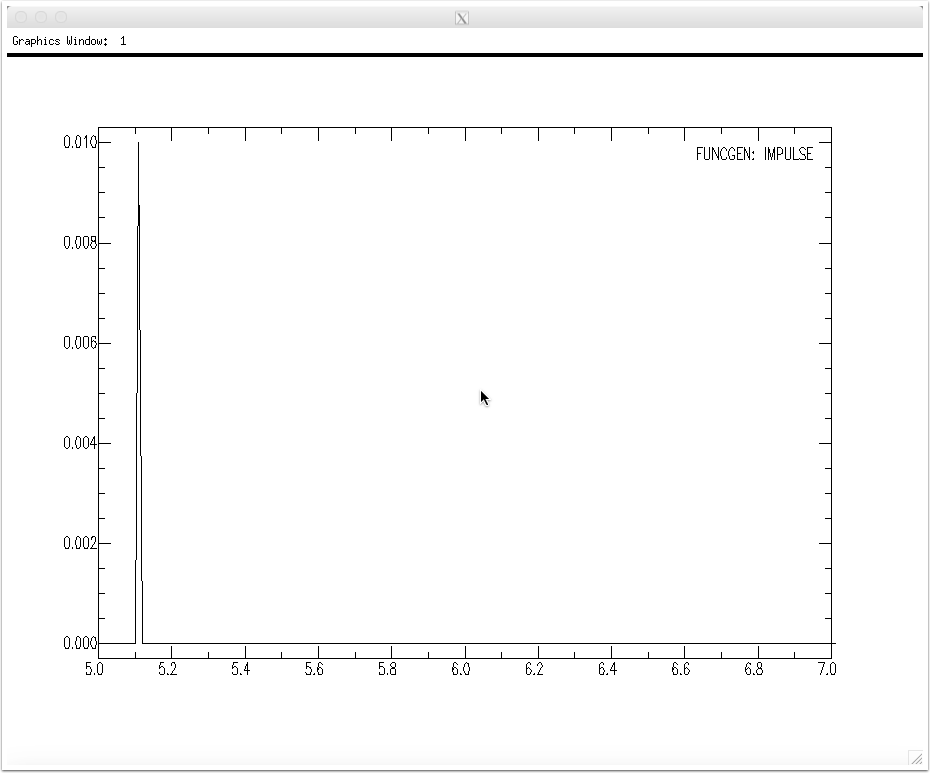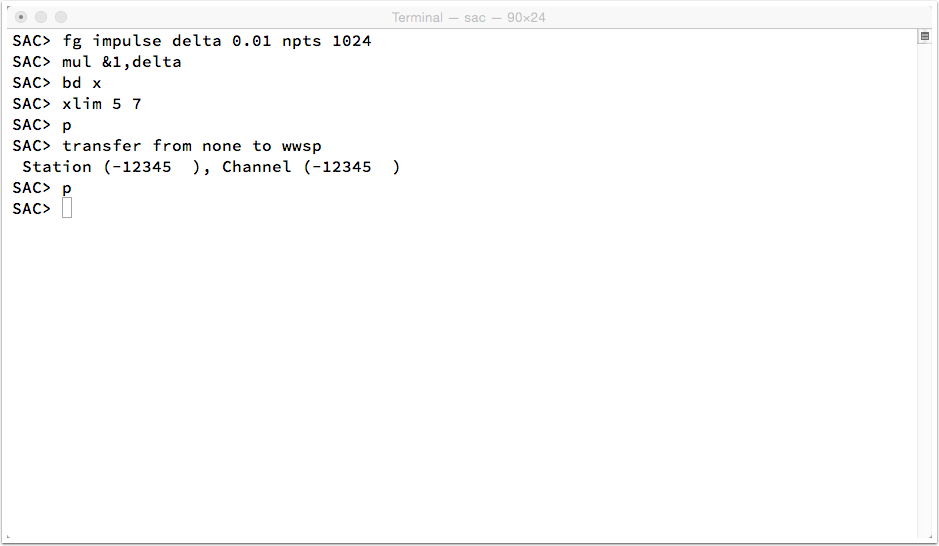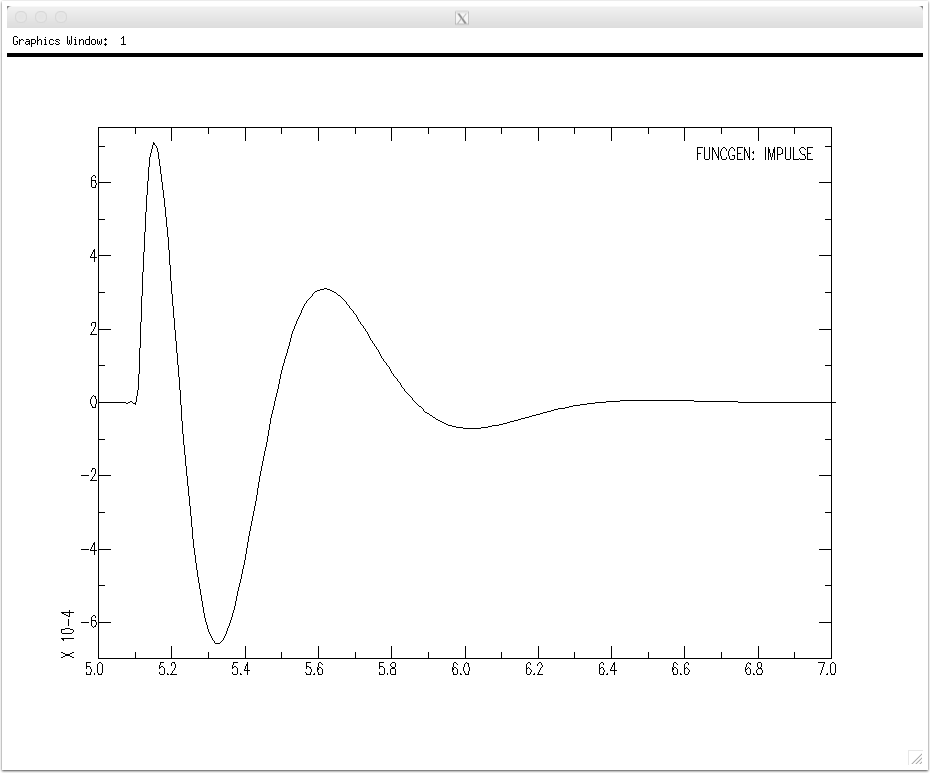The SAC transfer command is designed to convole or deconvolve seismic instrument responses into or out of the seismograms loaded into SAC's memory. Generally you transfer from one instrument response to another, but you can use the instrument 'none' to change the procedure to perform a convolution of an instrument response with the signals (or to remove the instrument response from the signals).
For many applications, the instrument response is described in a pole-zero of response file. But SAC also has information for standard seismic instruments. Our particular focus here are the WWSP (which corresponds to a WWSSN short-period instrument) and the Wood-Anderson, a version of the classic short-period instrument used by Richter in southern California. We'll use them as simple, short-period band-pass filters.

The WWSSN Short-Period Response
We'll start by generating a unit area spike (triangle) and then use the transfer command to convolve the WWSSN short-period response into the signal. The command &1,delta accesses the sample interval, delta, of the first seismogram.


Now we can transfer the response from none to wwsp. The result is shown below.

The WWSSN impulse response is shown below. The approximation has a small acausal oscillation but is generally causal and about 1.5 seconds in duration.


The WWSSN Transfer Function
Next we compute the Fourier Transform of the instrument response (the transfer function).

The Fourier Amplitude spectrum of the instrument is shown below. The response peaks just above 1.6 Hz (0.625 seconds period). The filter response is narrow band and asymmetric (falls off slower toward the high-frequency end). The signals is attenuated by a factor of 5 by frequencies of roughly 0.6 and 5 Hz.


Explore
Repeat the exercise but replace the wwsp response with the wa response and explore the Wood-Anderson seismometer. Apply the filters to some broadband seismic data - both filters are reasonably good at isolating P-waves (and regional S waves) from the background motions. The impulse response of SAC's wa filter is shown below. SAC's Wood_Anderson response is a high-pass filter with a corner between one and two Hz.
